One of the first modern shopping centres in Budapest, Sugár, was opened forty years ago on 29 October 1980. Its novelty was that rather than being a department store, the different shops were connected by a joint central space, just like the shopping centres littered around the world today. It was built during the decline of the plan-based economy of the socialist state, 40 years ago. Naturally, the shops were all state-owned, but in one place, and at a major transportation junction.
In the 1970s a massive housing estate was built in what had been the wasteland of örs Vezér square. Plans for the shopping centre were floated as early as 1970. The periodical Kereskedelmi Szemle wrote about the construction of six major shopping centres in its September 1970 issue, the one planned for Örs Vezér Square was listed as a "high capacity" centre.
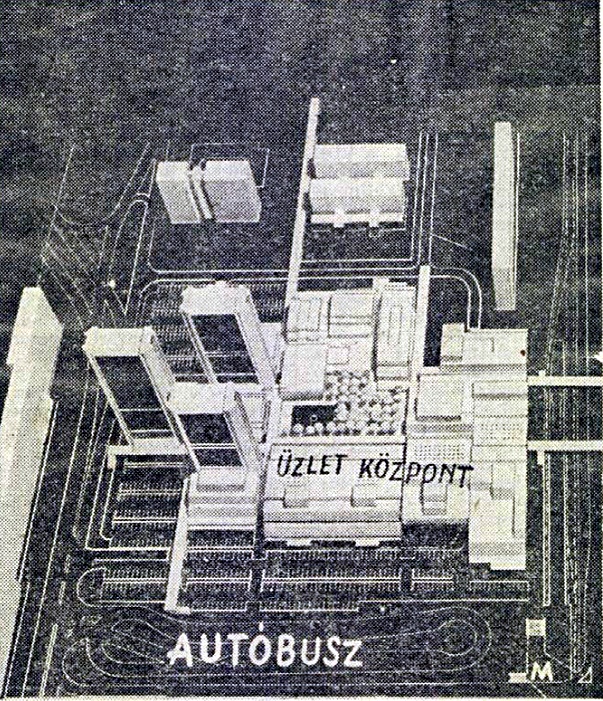
Plans for rebuilding Örs Vezér Square (Photo: Népszabadság, 1 January 1970)
A tender for plans to redesign the square was announced in the 1970s and won by BUVÁTI, and its architect László Iványi. The plans were finalised on 31 March 1974. These contained not only the 27-thousand square metre shopping centre but three 18–24-storey residential buildings, a cultural centre and a clinic. In the 100th January 1974 issue of Népszabadság, László Iványi said the following regarding the plan:
"The jobs created in the tower blocks to be constructed will contribute to the atmosphere of Örs Vezér Square. Today, all we know is that the Budapest Archives will move into one of them. The plans also contain a cultural centre for Zugló, which will house a library, a cinema and rooms and hobby and group rooms. A park will provide recreation in the centre of the square."
The first phase was limited to the construction of the shopping centre. Work began in August 1975 and was planned to b completed by 1979. Due to a lack of capacity on the constructor's part, this deadline was modified to 30 April 1980. Construction was completed by the date, but the technical acceptance procedures, and stocking the shops meant that Sugár opened in October 1980. The complete costs reached 646 million HUF at the time.
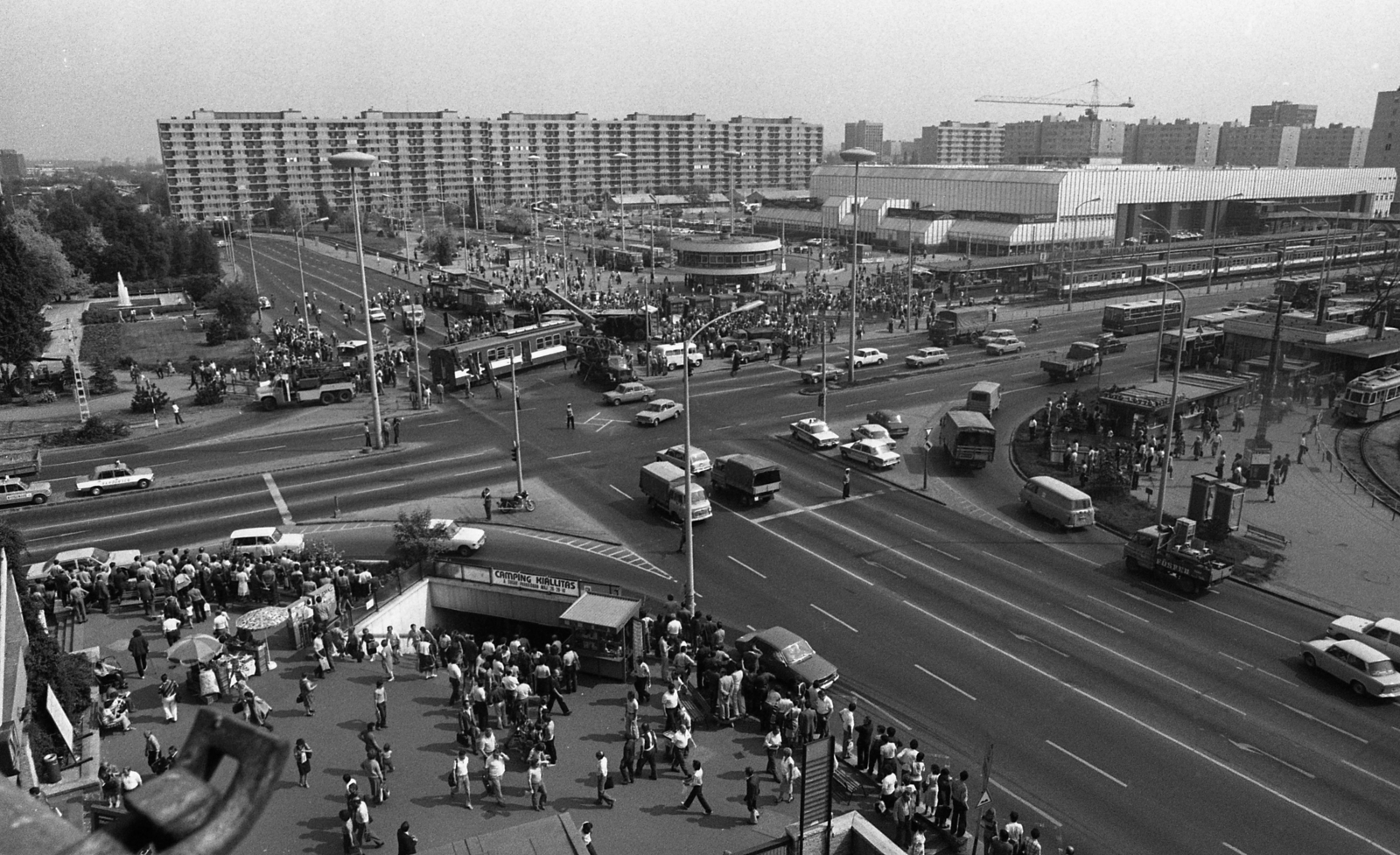
Sugár was a defining element of Örs Vezér Square for years - photographed in 1982 (Photo: Fortepan/No.: 125598)
The official opening ceremony was held on 29 October. On 30 October 1980 Magyar Hírlap reported:
"The country's largest and most modern shopping centre was opened on Wednesday. At the ceremony – attended by József Marjai Deputy Charinman of teh Council of Ministers, Imre Katona Secretary of the Presidential Council and Zoltán Szépvölgyi Chairman of the city council – Mrs. Ferenc Csehik, deputy-chair of the city council announced the completion of the shopping centre in the name of the contractors, which was followed by a speach by Vilmos Sághy, Minister of Commerce.
In the spirit of the times, the date of the official opening is listed as 7 November in several sources, including the shopping centre's website. At the time it was considered fitting to connect all larger events to a date important to the socialist regime. On an official level, in the Hungary of 1980, no holiday was more important than the 7 November – the anniversary of the Bolshevik coup in Russia, at the time officially called the Great Socialist October Revolution.
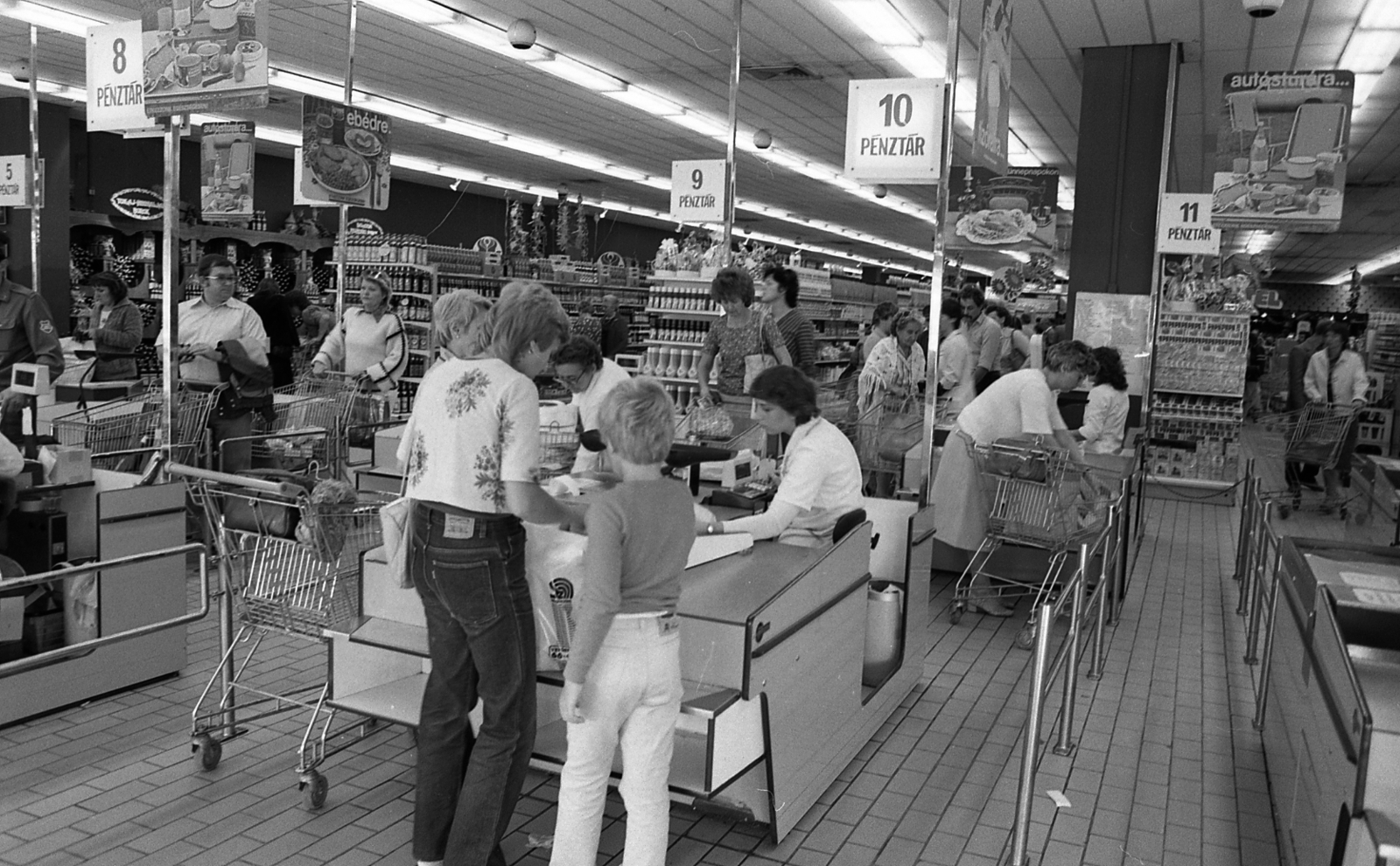
Shopper in Sugár in 1983 (Photo: Fortepan/Magyar Rendőr)
The completed two-storey shopping centre covered 29-thousand square metres. The largest shops were Csemege (foods), Keravill (technical and electronic goods), Vasedény (household items), and Szivárvány (general store, clothing). A further 15 shops and 14 services operated in the building.
A competition to name the shopping centre was announced. Terminál was the winning entry, but the council named the complex Sugár ('radius') citing that terminál" is not a Hungarian word.
The slogan "Csak egy ugrés a Sugár" mentioned above became iconic for a generation. However, it was not used after 1986, as the word sugár is the root of the word sugárzás, which means radiation – an unpleasant connotation following the nuclear catastrophe of Chernobyl.
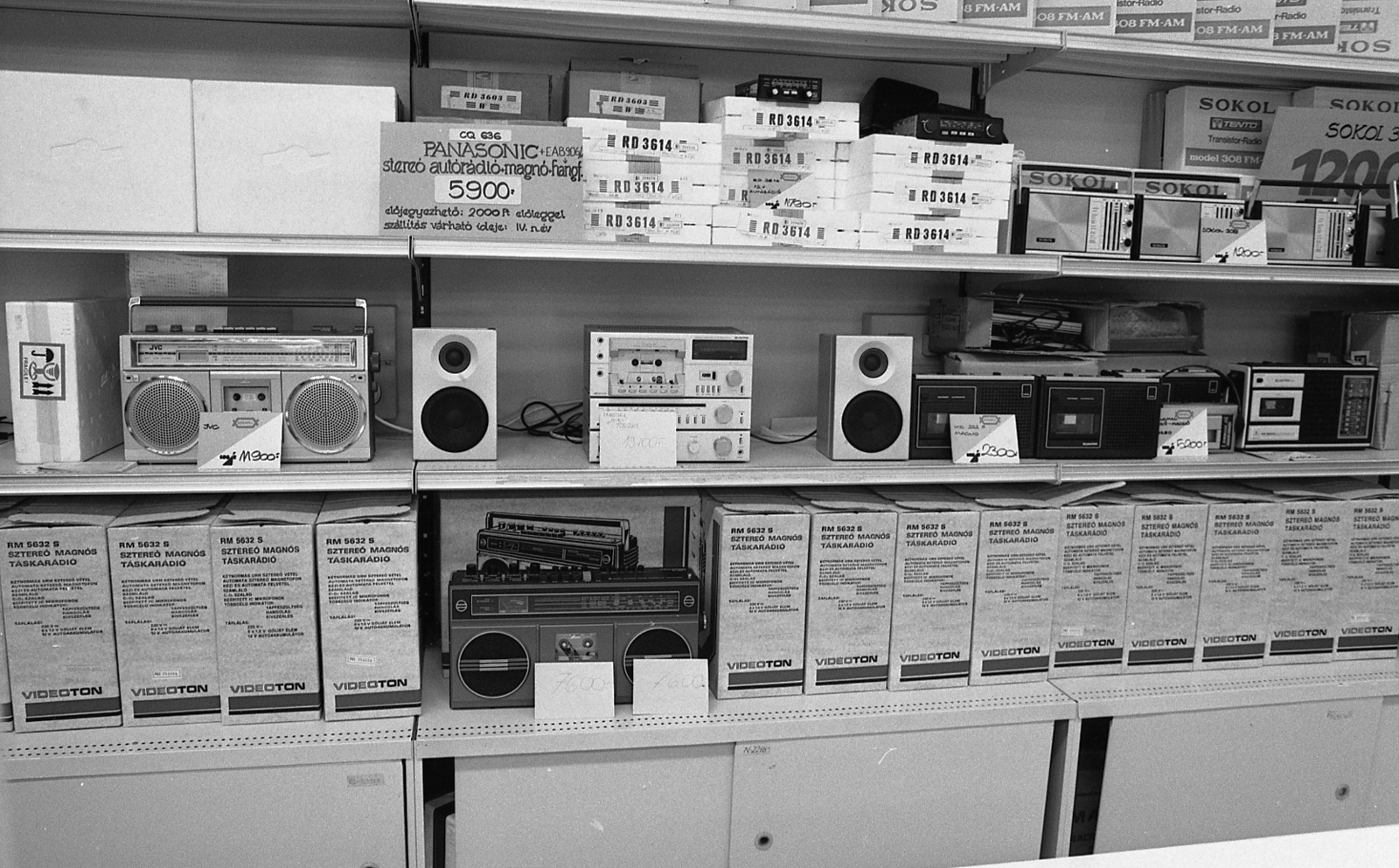
Sugár housed the most modern Keravill shop in the country (Photo: Fortepan, Magyar Rendőr)
The shopping centre brought about a slew of novelties. Delivery of certain goods could be requested, pre-orders placed, and the Csemege was one of the best-stocked food shops in the country.
Planners also paid attention to items that were generally neglected at the time. Thus, the second floor was made accessible to those with limited mobility.
A few months after the opening, Secretary-General of the Party, János Kádár, visited the shopping centre on 23 April 1981 and asked about the sourcing of goods and working conditions.
The shopping centre was extremely popular and generated an annual turnover of 2 billion HUF in its first year, meaning customers spent 5–6 million Forints in the complex each day. By the 1990s the shopping centre became obsolete, a memory of a bygone era and massive competitors opened in its immediate vicinity. As a result, after 2010 the shopping centre underwent a significant remodelling and welcomes visitors to the present day.
Cover photo: Sugár in 1983 (Photo: Fortepan/Magyar Rendőr)

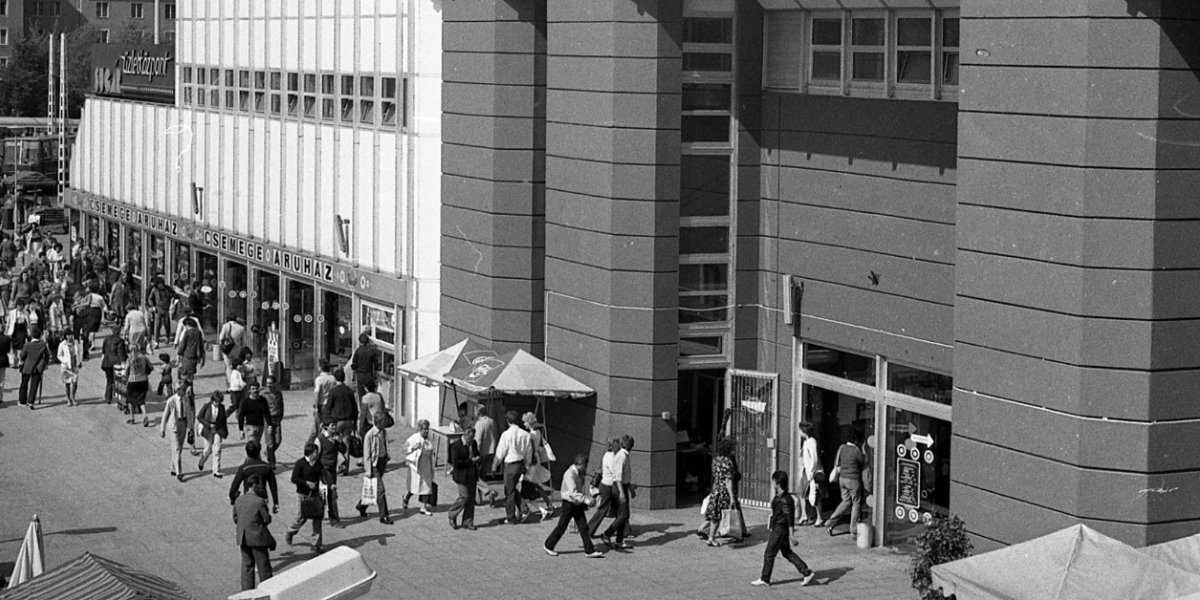



































Hozzászólások
Log in or register to comment!
Login Registration